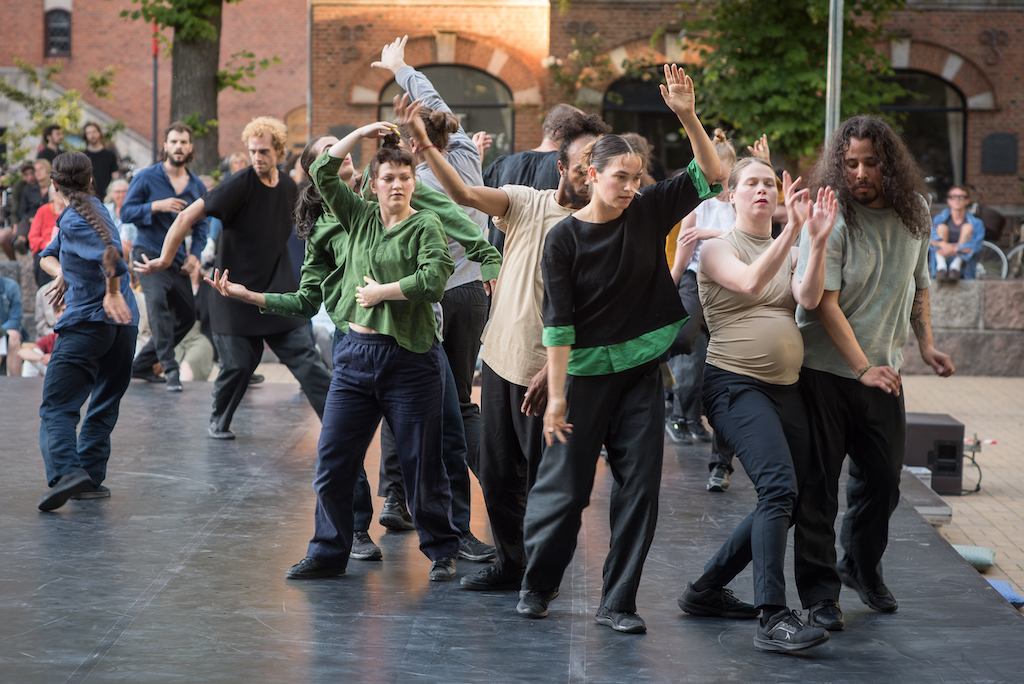While in battle I’m free, never free to rest – Reportage from a Summer Day at Blågårds Plads
by Stina Strange Thue
Blågårds Plads exudes a Southern European atmosphere. The sun finally spreads its summer rays over Denmark after what feels like weeks of autumnal weather in mid-June. It has become summer in an un-Danish way—the kind of summer where evenings are spent outdoors.
But tonight, Blågårds Plads is something else entirely. Iranian folk music mixed with crisp beats flows from speakers in the middle of the square. The speakers encircle a small elevated stage where dancers are moving, preparing for the performance “While in battle I’m free, never free to rest” by Cullberg and choreographer Hooman Sharifi. There are 10 Cullberg dancers and 10 street dancers.
For a moment, it feels as if I am not in Denmark. The warmth, the music, the dancing, the crowd. I think this is what music and dance can do—make specific places, locations, and moments feel universal.
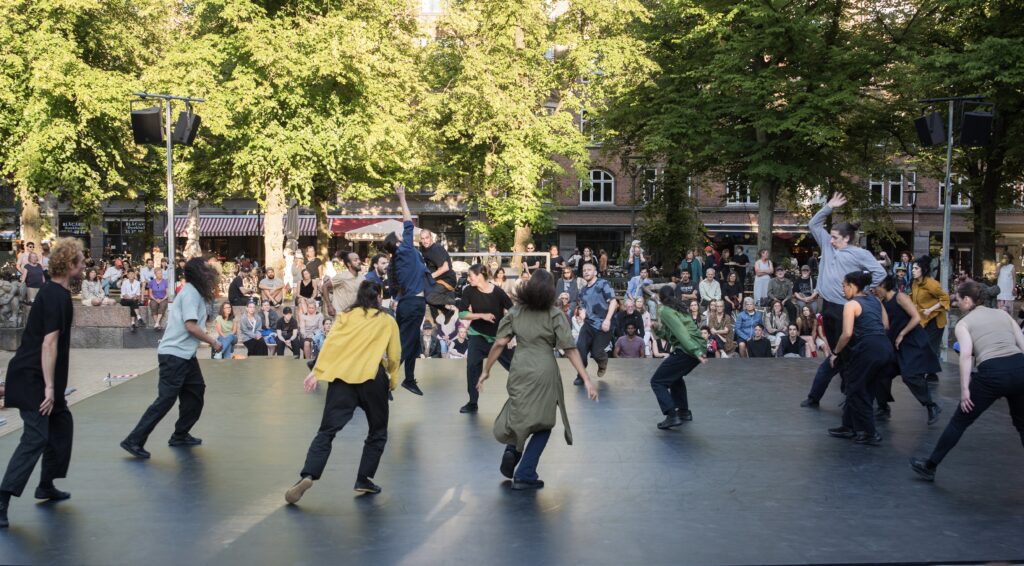
“While in battle I’m free, never free to rest” begins with a reading by the Danish author Amina Elmi, who debuted with “Barbar (Tavshedens Objekt)” in 2023—a poetry collection I personally loved. Perhaps that’s why I feel joy in my body knowing she will open the performance, or perhaps it’s because the involvement of Danish artists speaks to me about working more sustainably, across borders, and using local resources. Together with the Danish street dancer Anastasija Olescuka, who choreographed “ANTS 1+1=3,” they embody this very idea.
Amina Elmi walks confidently around the stage, her voice direct and strong, her gaze seeking eyes in the crowd, and I sense the silence settling over the square that was buzzing with life moments ago. The buzzing moves into people’s bodies. Movement is found in the tingling attention directed towards Amina on stage. People listen. They really listen to her voice, her words. The battle is a place for and in freedom, but it is not a place for rest.
I think we need more rest. Bodies in battle need more rest.
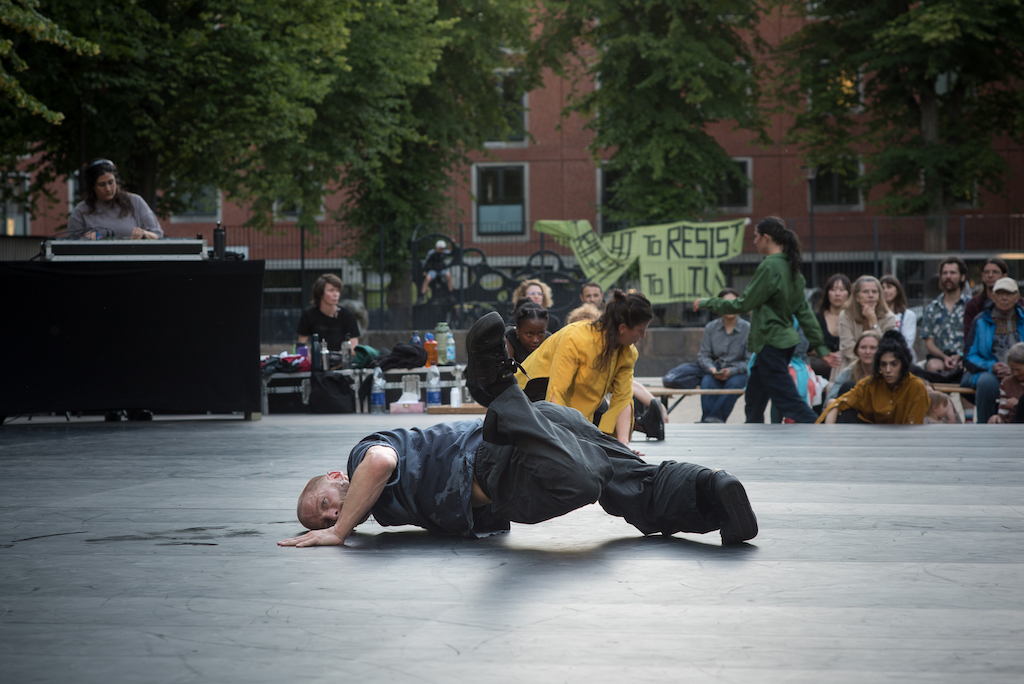
A DJ booth is set up in the corner of the stage. Here stands Neda Sanai, who gradually begins to create soundscapes while the dancers crawl down after having sat on stage listening to Amina Elmi’s words. They place themselves on small cushions at the edge of the stage as Neda Sanai subtly builds up the music. The Iranian folk music blends in waves with another pulse and rhythm.
A dancer crawls onto the stage and improvises a solo, replaced by another dancer, who is then replaced by a third. Only one dancer is on stage at a time. They take elements from each other’s movements and add their own. It’s like a cycle that tells us we all carry a little part of each other into our encounters with the next person, the next witness of life, the next love.
People meet through movements, body, and kiss.
You kissed me there in the crowd. It was new and fresh and familiar.
Your smile. My body. A crystal-clear sensation.
One dancer becomes two dancers, becomes a group. Long sessions replace and weave into each other, just like the dancers constantly move from dancing alone to dancing alone in a crowd to becoming one and holding hands in a circle. The circle provides a moment of calm.
The dancers’ individual expressions are always in play. A reminder that we can indeed dance and move together, even though we are different, have different bodies, and are in different places. In that diversity, a common movement is found.
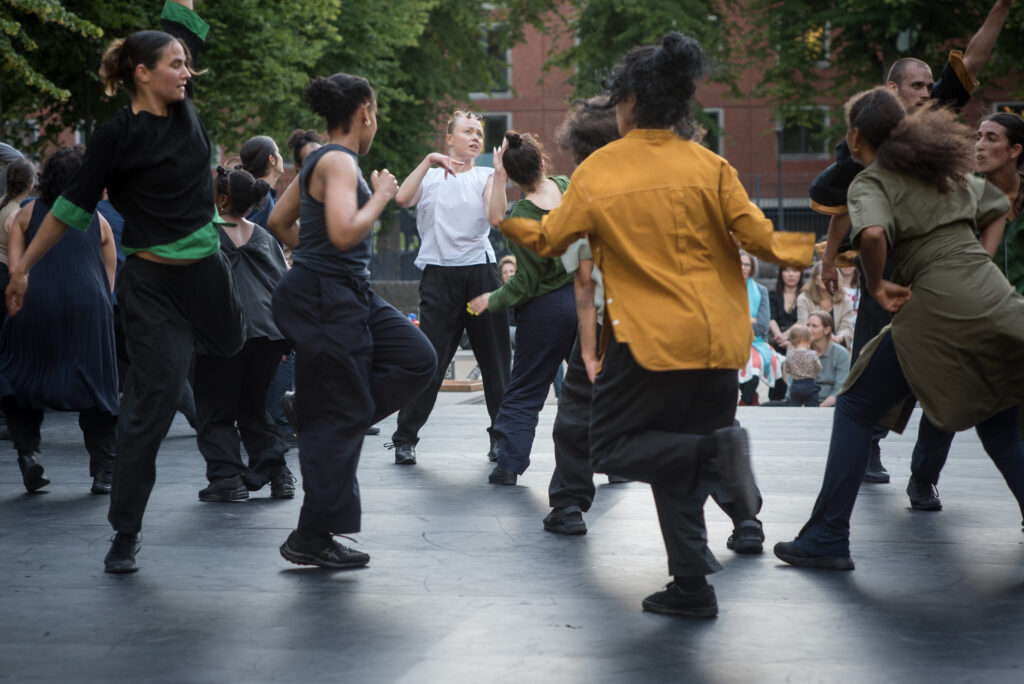
I imagine the audience around the stage sees reflections of themselves in one or more of the dancers. My eyes follow particular dancers who have captivated me in one way or another. One dancer’s tall and muscular body, which commands the stage with its entire being, and another’s whimsical movements, her eyes filled with awareness and mystique. In the resonance lies the recognition of something within oneself, and in that recognition lies a meeting. The resonance vibrates in the air between the dancers and the audience, as the summer evening slowly becomes cooler and the audience puts on sweaters.
I imagine small particles traveling from the dancers’ bodies on stage, down to the audience, and back again.
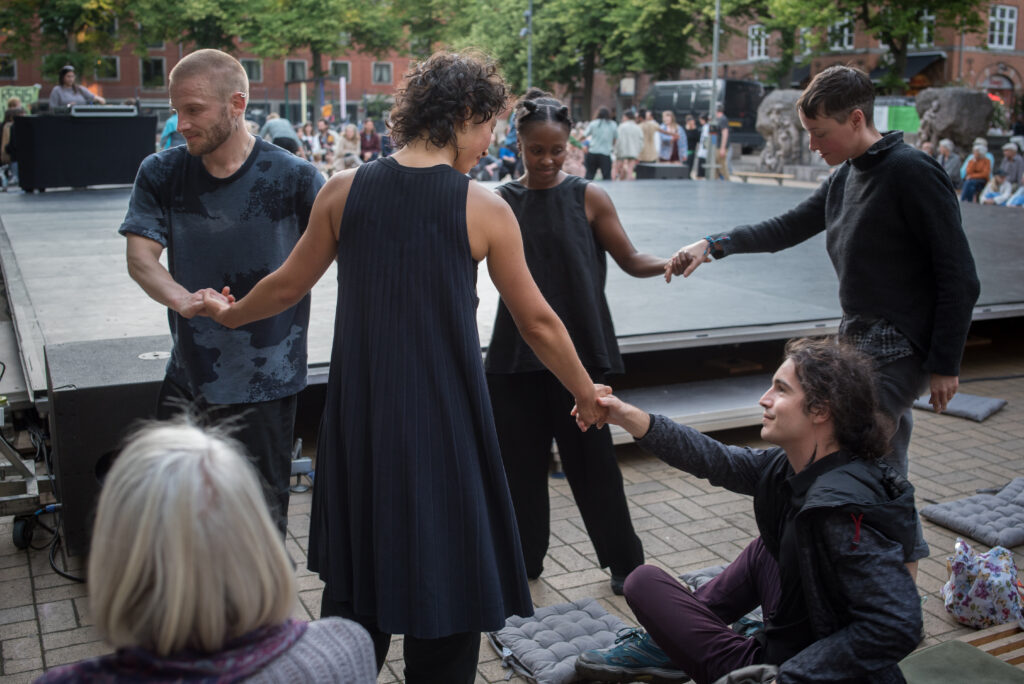
The stories of the evening are many. Togetherness, community, struggle, urbanity, diversity. Stories that are part of our present and increasingly part of our future, where migration due to war and climate change becomes a greater aspect of everyone’s world. We need to consider how we will live together in the future.
Perhaps music and dance are part of the solution. Both can feel like languages so open that everyone can add themselves to the narrative. At least, there is a sense that we are united in something this evening at Blågårds Plads, where the dancers eventually invite a few audience members onto the stage to become a physical part of the story.
I rise with my arm around a close friend, send a glance in your direction, and leave Blågårds Plads.
Maybe a particle from one of the dancers’ bodies travels through mine and rests in yours for a while.
Photos: Thomas G. Bagge



